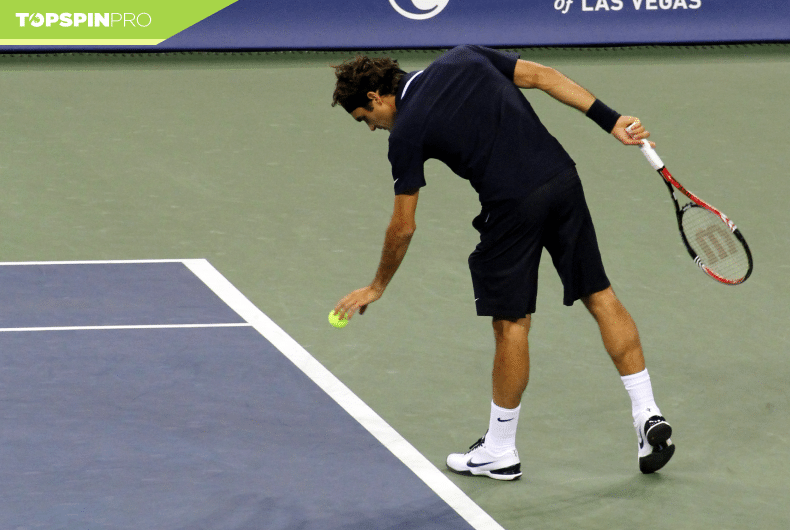 Photo: pixabay.com
Photo: pixabay.com
What we'll cover in this article:
Stay in the loop!
Want to be updated when we publish? Be sure to sign up for our newsletter. No spam, we promise!
10 Tips To Transform Your Serve
1. Use The Correct Grip
- Continental Grip - You’ll need the continental grip. If you use your forehand grip, you can’t rotate your lower arm. This ‘pronation’ is how you create power and spin. With the continental grip, pronation just happens. Check out Alex Zverev’s technique in the video below. His racket travels on edge towards the ball, it twists flat on contact and the palm of his hand turns to the outside of the court from contact point to follow-through:
- Stay Relaxed - The looser you are, the faster your racket-head speed. Tensing up means you slow down the acceleration of the racket. Wiggle your fingers on your grip while bouncing the ball before you serve. Most pro players do that or spin their racket. Andy Murray is known for his racket spinning.
- Hold Grip At The Butt - Pardon? Yes, try holding the grip at the butt cap. You’ll get a longer lever, more looseness and more power. Your little finger should be close to the butt of the handle, as low as you can hold it without your finger coming off the end. Try this for an increase in power!
2. Set A Routine
Serving is like playing golf. It’s the one time your opponent can’t influence what you do. It’s just you, the score, and the contents of your head. Keep a set routine so your timing and rhythm stay consistent. Then, when the heat is on, you can keep firing that serve. Without a routine, the score and situation can throw you off.
Admit it – you tend to rush when under pressure. But think like Rafael Nadal. He pushes his hair behind his ear, tweaks his nose and adjusts his shorts. He says that, when he does these things, he knows he’s in control. You don’t have to do this. But you could ensure you do four ball bounces each time. See how it helps you relax.
3. Don't Give Anything Away
Andre Agassi said of Boris Becker that he knew where he was going to serve by the position of his tongue. Don’t give anything away by looking where you’ll aim your serve, changing your position along the baseline, or drastically altering your toss.
4. Have A Solid Stance
Relax, just like with your grip. Find a stance that suits your height, limb length, and body size. Most importantly, stay loose and comfortable throughout your service. Make sure your chest faces the side of the court to get that shoulder rotation and your feet provide a solid base.
Keep your balance and make sure your body weight naturally shifts forward through your action so you finish on your left leg (right-handed) or right leg (left-handed). Wobbling around? Chances are your toss is wrong or you need a wider, more-balanced stance.
5. Control Your Toss
- Push vs Toss The Ball - It’s ‘the toss’ or ‘the throw’. But you don’t really do either. You ‘push’ the ball into your hitting zone. Straighten your arm and push the ball up from the palm of your hand (mainly the index finger pad, which is the last area the ball should touch when leaving your hand). Check out the image of Stan Wawrinka below with his arm straight and index finger pad extended up towards the ball after it’s left his hand:
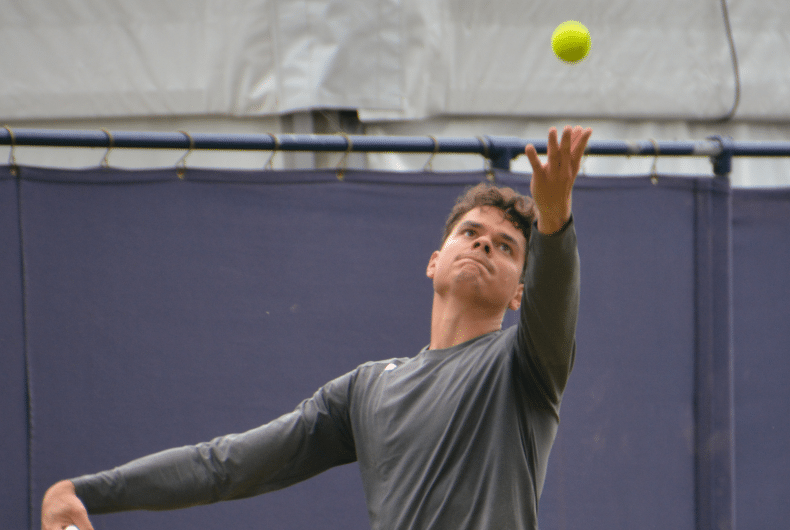
- Place Your Toss With Your Palm - As you send the ball up as a ‘push’, use your palm to guide it to the right area. Raise your palm towards the contact. Also, be aware of where your contact point should be and what your service should look like. Visualization helps get your toss right.
- Control The Speed - The faster you go, the less controlled you’ll be. Keep your toss relaxed and steady. You’re guiding the ball up, not launching it.
6. Have A Lasso
Mechanically, the lasso component of the serve is the most essential part of the action. You’ll want to drop your racket behind your back and then increase in speed up toward the contact point. This is the throwing action. Without it, you can never maximize your power and you might injure your rotator cuff.
The best tool we’ve found to practise this is the ServeMaster. Watch the video below to see how it helps you incorporate the lasso. You can purchase the ServeMaster at thetotalserve.com.
7. Hit The Serve Forward And Not Down
Unless you’re a beanpole, you’re going to need to hit the ball forward or up on your serve to get it over the net. Not down. Gravity will do that job for you. If you’re always serving into the net, visualize striking the back of the ball and projecting it forward.
The shorter you are, the more you’ll need a topspin or kick serve. This way, you can bend the flightpath up and over the net in an arch shape for great net clearance. If you’re taller, you can use flatter serves and slice serves to your advantage.
8. 1st Serve vs 2nd Serve Finish Position
Because your first serve is more aggressive than your second, you can expect a weaker return. Try to make your body weight travel forward over the baseline on your first delivery to maximize your power. You should find your finish position is one or two steps inside the baseline. You should expect a stronger return on the second serve, so you want to stay on or behind the baseline for your finish position. This way, you’ll recover more quickly and be ready for that return.
9. Mix Up Your Serves
The pros with massive serves are rarely the very best players in the world. The top pros are pretty average with their speed, but they use a variety to create and build points. Chances are, you don’t have that ability. So your serve is easy to read. Keep your opponent guessing by varying your pace, spin, and placement. Placement and spin are more important than power. Think about Nick Kyrgios’ underarm serves. Try it yourself but be prepared for a few heated exchanges. This tactic highlights how mixing up your serve type can be very successful.
10. Practice Your Serve (Under Pressure)
If you’re like most adult players, you never practice. You just take lessons or play points. I’ll be you don’t practice your serve, for sure. But just five or ten minutes each time you play will set you apart from the rest. Practicing placing your toss and developing a consistent second serve can win you a lot of matches.
Even better, practice under pressure to replicate a real game situation, because choking can happen to the best of us. Aim for targets or set a serve percentage challenge, such as six out of 10. Do this and the real thing won’t seem so daunting.
TOPSPINPRO BEGINNER COURSES
We use the latest neuroscience in our TopspinPro Online Courses. Check them out for some in depth help with developing your shots:
In Summary
Add some of these tips to your game. Struggling to remember what to do? Check out videos of your favorite players to see the tips in action.
Don't try to master all of these tips at once. Start out with one or two that you can add almost instantly. Others will need more repetition to build muscle memory.
Get confident doing them before you use them in a real game. Adding something unpractised in a match is a recipe for disaster. As tip ten says: get lots of practice under pressure.
We love to hear your feedback, so let us know in the comments below how you get on with our tips.
FAQs
-
What grip should I use to improve my serve?
Use the continental grip. This grip allows your lower arm to rotate, creating power and spin. It helps with pronation, which is essential for an effective serve.
-
How can I stay relaxed while serving?
Stay loose to increase your racket-head speed. Wiggle your fingers on your grip or spin your racket before serving, just like pro players such as Andy Murray.
-
What routine should I follow to maintain consistency in my serve?
Keep a set routine to ensure consistent timing and rhythm. For example, bounce the ball four times before serving, similar to how Rafael Nadal has his specific pre-serve rituals.
-
How should I control my toss for a better serve?
Push the ball into your hitting zone using your palm, mainly the index finger pad. Keep your toss relaxed and steady to maintain control.
-
Why is it important to mix up my serves?
Varying your serve’s pace, spin, and placement keeps your opponent guessing and makes your serve less predictable. Pros like Nick Kyrgios use this tactic effectively.
Links Related to This Article
Enjoyed this article?
Be sure to sign up for our newsletter and we'll keep you up to date about new posts
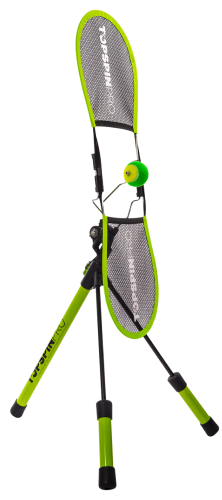
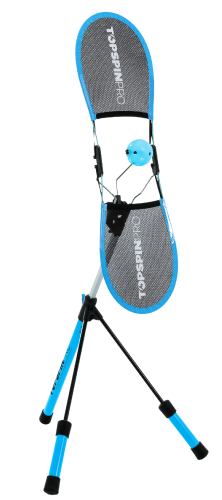
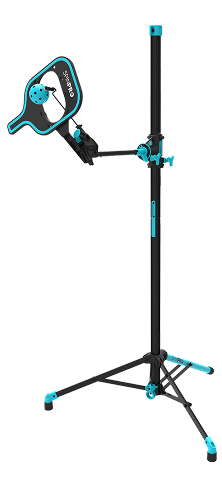
4 comments
This is very good. I like it very much and will try on next practices and tournanments. Great job Zoé! 🙂
Thanks Zoe – some good stuff in there. My toss is ok & i have a simple routine but have to really concentrate to stay in the continental grip position…. maybe the ServeMaster will help – those players look so natural?!
Coaches often say to me “keep the ball on the racket for a little longer” when I serve and I’ve not really known what that means in practical terms. “Hit the serve forward and not down” is exactly what I needed to hear and it’s just clicked for me – thanks Zoe!
Extremely helpful tips both technically and psychologically! Love the advice about the toss, establishing a consistent routine, and looking for any an all cues from your opponent, even their tongue position! :-). Thanks, Zoe!